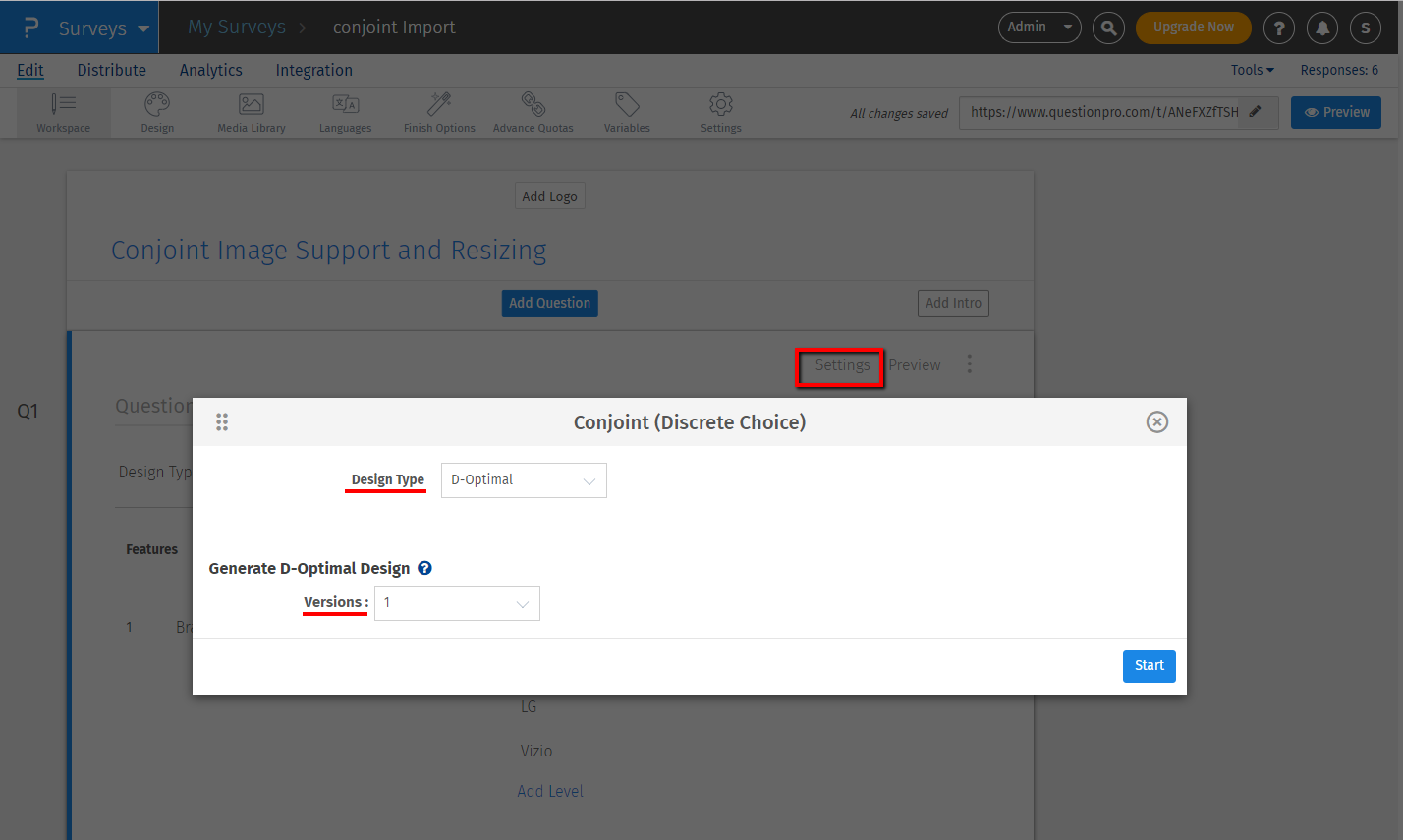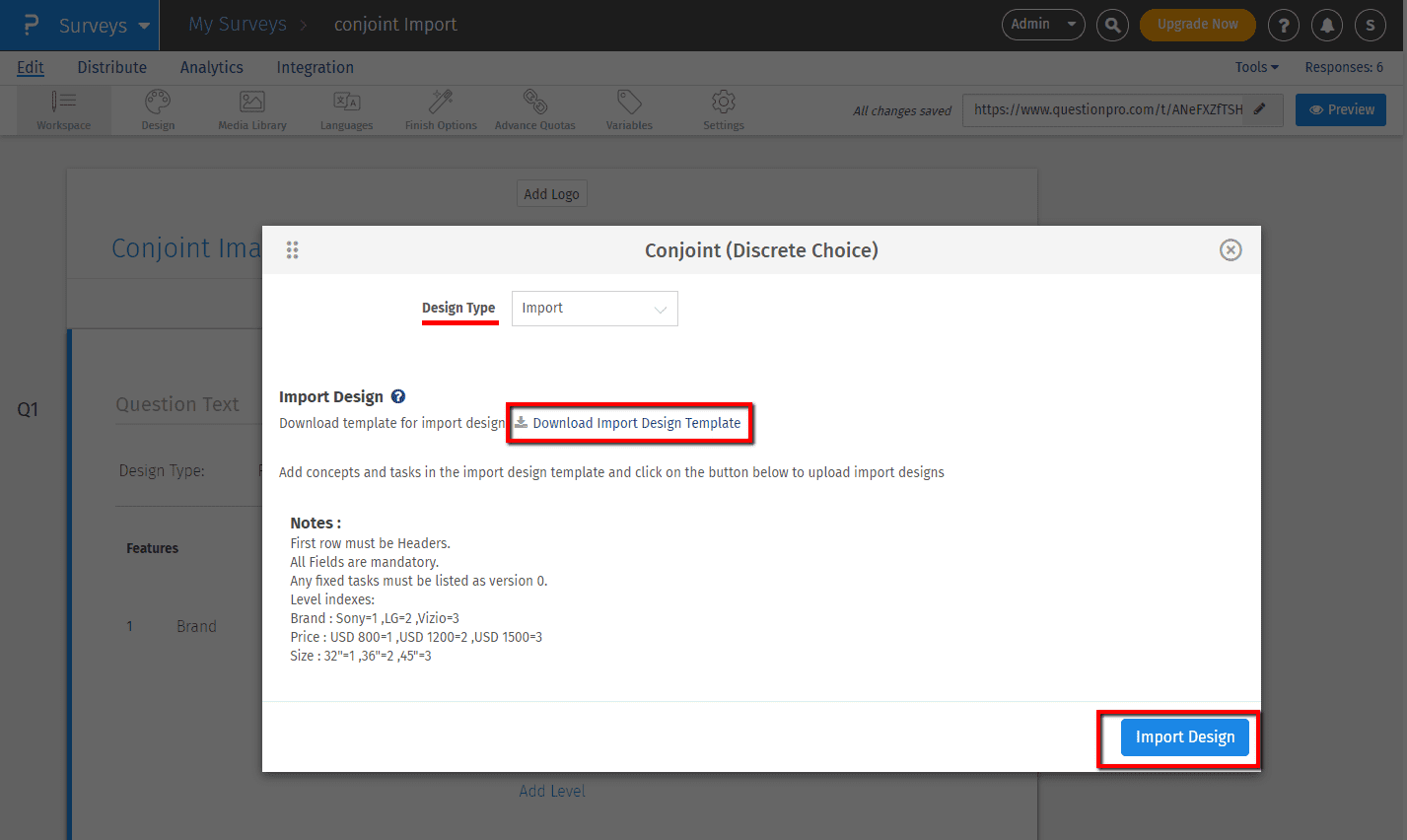
Conjoint Analysis (Discrete Choice Module) Designs
The SurveyAnalytics discrete choice module (DCM) provides a range of options to the researcher for carrying out discrete choice conjoint research. One of the options specifies the design used by the DCM.
The design of a discrete choice question is the specification of how the respondent is presented the various levels of attributes in the survey. In discrete choice questions respondents are presented with sets of profiles of possible products or services and asked to select one of them. The configuration of the different choices, and how many are presented is referred to as the design of the discrete choice task. A good design will select specific configurations in a way such that the range of possible configurations is sampled in an efficient way. Designs are an optimization of the attribute levels available, they are an attempt, given various limitations, to select the best configurations of levels to give the most accurate results. The d-optimal design algorithm is therefore an attempt to best use the available respondents.
- Random Random design is a purely random sample of the possible attribute levels. For the number of tasks per respondent SurveyAnalytics produces a unique set of attribute configurations to be presented to the respondent.
- D-optimal This is a design algorithm that will produce an optimal design for the specified number of tasks per respondent and sample size. More information on this design algorithm is available in the D-Optimal section.
- Import Design This allows designs, in the SPSS design format, to be imported and used by the SurveyAnalytics DCM module. This is useful when users want to use designs not generated by SurveyAnalytics, such as fractional factorial orthogonal designs.
Optimal designs are a class of experimental designs that are optimal with respect to some statistical criterion. In the design of experiments for estimating statistical models, optimal designs allow parameters to be estimated without bias and with minimum-variance. A non-optimal design requires a greater number of experimental runs to estimate the parameters with the same precision as an optimal design. In practical terms, optimal experiments can reduce the costs of experimentation.
Conjoint Analysis D-Optimal Design is a design based on D-Optimality for the Conjoint Analysis (Discrete Choice) question. In general, D-Optimality is a concept that uses a desired set of experiments to optimize or investigate a studied object. It seeks to minimize |(X'X)−1|, or equivalently maximize the determinant of the information matrix X'X of the design.
- Step 1: First, you need to add a Conjoint (DCM) question to the survey.Go to:
- Login » Surveys » Edit » Workspace » Add Question » Advanced Question Types » Conjoint Models
- Type in the Header / Instrutionsusing inline editing
- Add the Levels
- Add the Features for each level
- Choose the number of screens with options to be be selected that you wish to show your respondents, under Tasks
- Choose the number of concepts to be displayed in each task under Concepts
- Enable the toggle button if you'd like to include a 'Not applicable choice' option (Optional), and provide a text in the box to appear as column header for this
- Step 2: Go to the saved question and click on 'Settings' link for it
- In the 'design' dropdown choose DOptimal. The inline popup window will refresh automatically.
- Versions: Here specify how many versions of the DOptimal design would you like to generate. If multiple designs are generated, a large doptimal design, with total tasks equal to (the number of tasks specified) X ( the number of versions specified) will be generated. While taking survey each user will get as many tasks as specified in the question but these will randomly chosen from large doptimal design generated earlier.
- Click on save button to proceed

- Step 1:Start by adding a Conjoint DCM question as is walked through above. Ensure that under 'Task Count' and 'Concepts Per Task' you choose the same numbers as that you have in the Excel sheet you are going to import
- Step 2: Click on 'Settings'. In the in-line popup in 'Design type' choose 'Import'
- Step 3:The pop will refresh automatically showing a sample format of the import design on the screen. Also a link to a sample import file lets you download it for your reference. Once your file is ready use the upload option to select it and import it.
- Step 4: On the following screen click on 'Import Design'.
Version:The first column in the spreadsheet is about the version number of the designs. Multiple versions get displayed randomly to the respondents. This number should be '0' if the particular row is about a fixed task. Task:The second column is the task number i.e. the group of options displayed at a time on the screen. Concept:The third column is the concepts number within each task. The columns after this will depend upon the number of features you have in the question - one column per feature.


